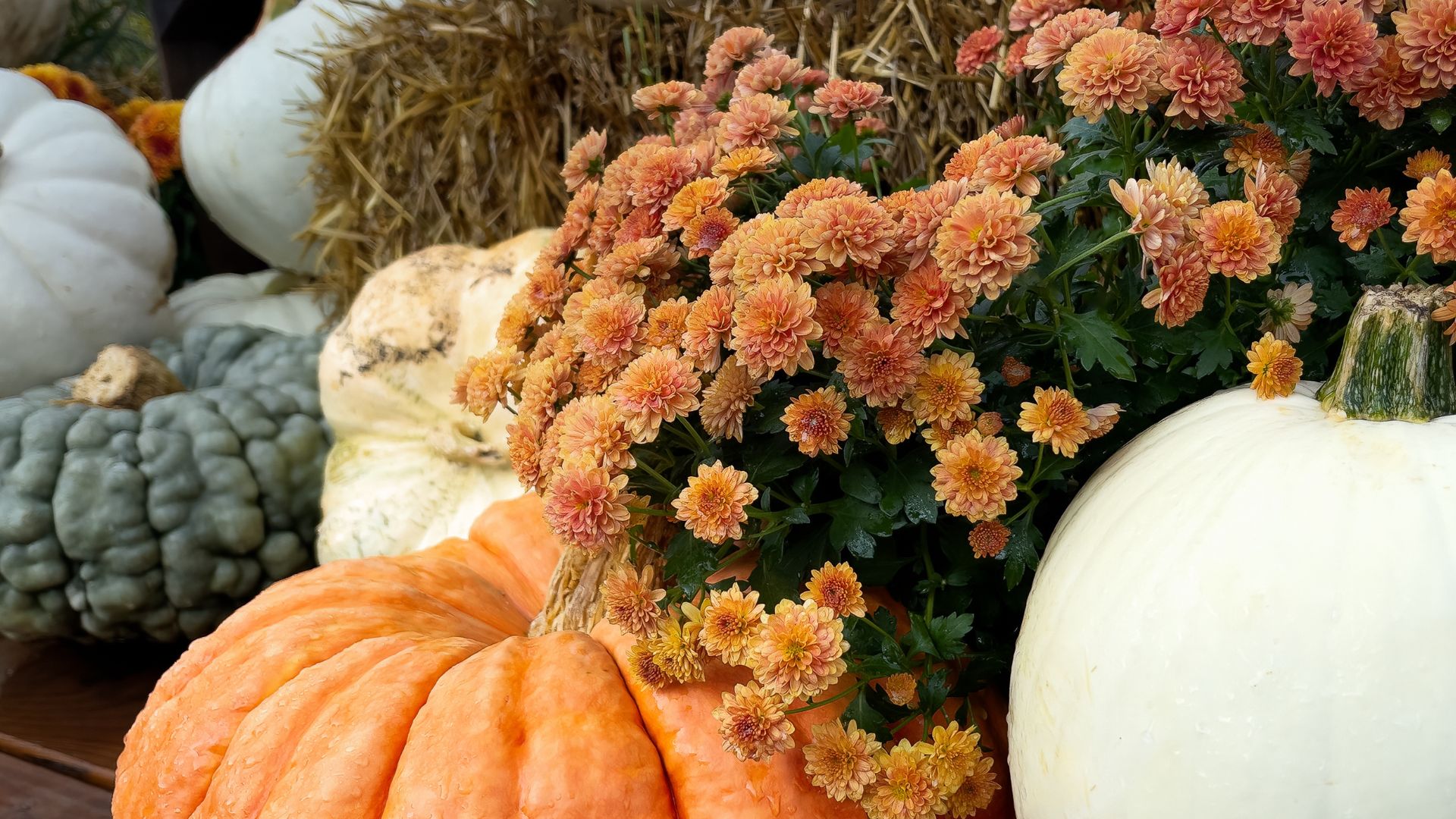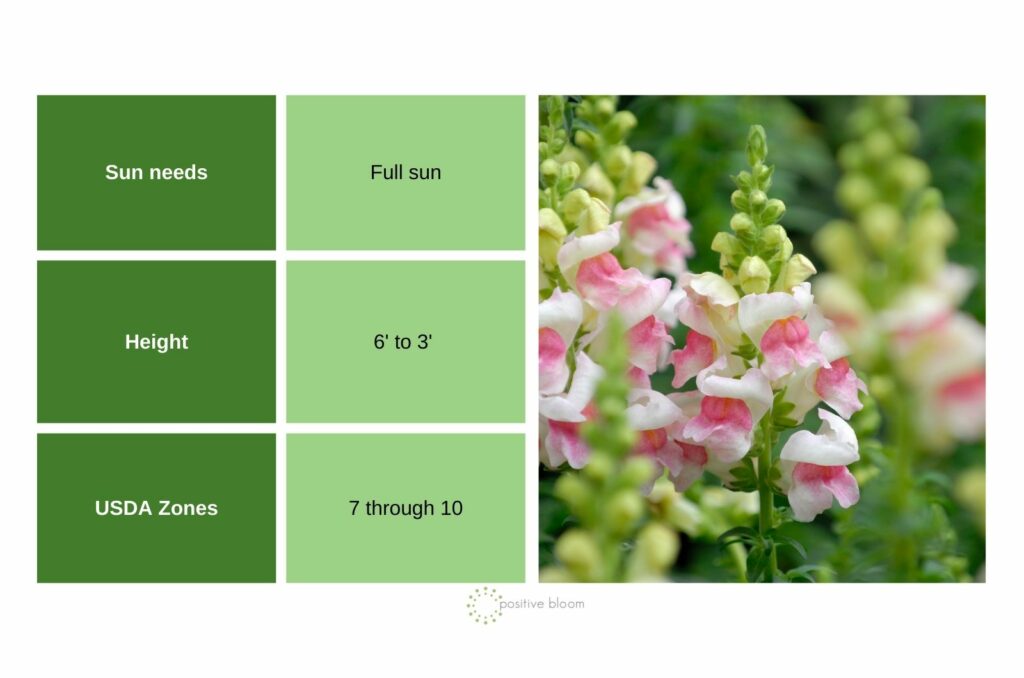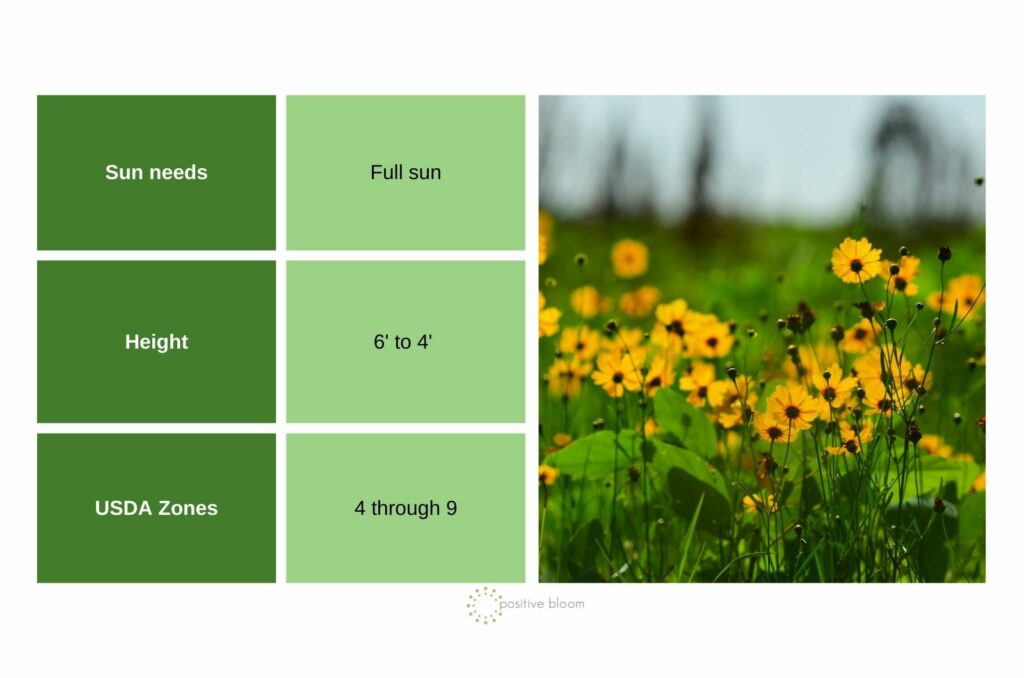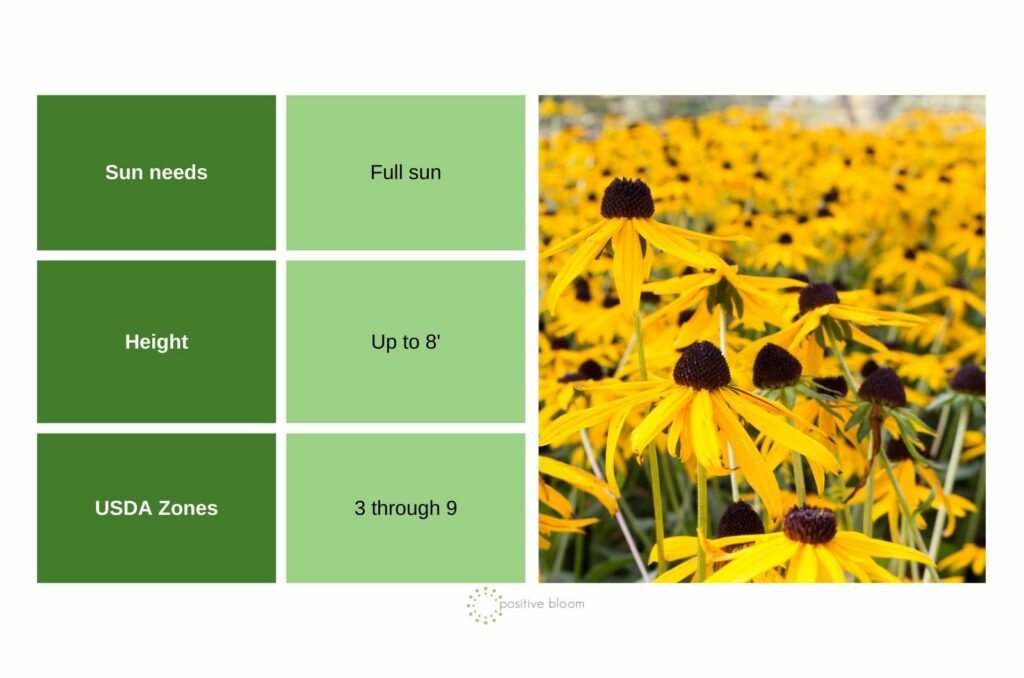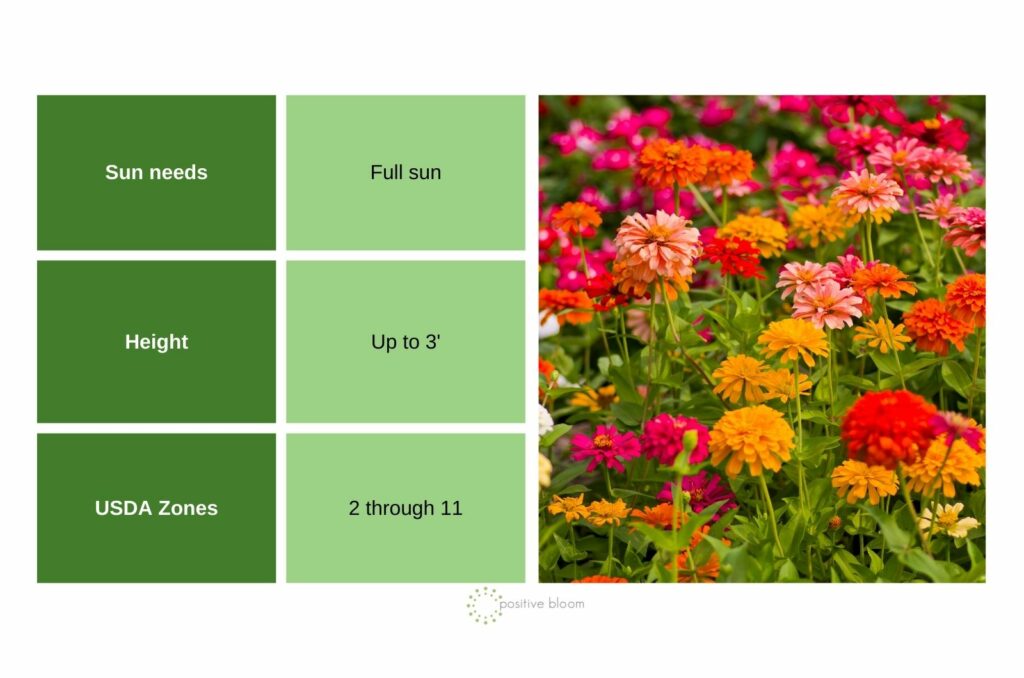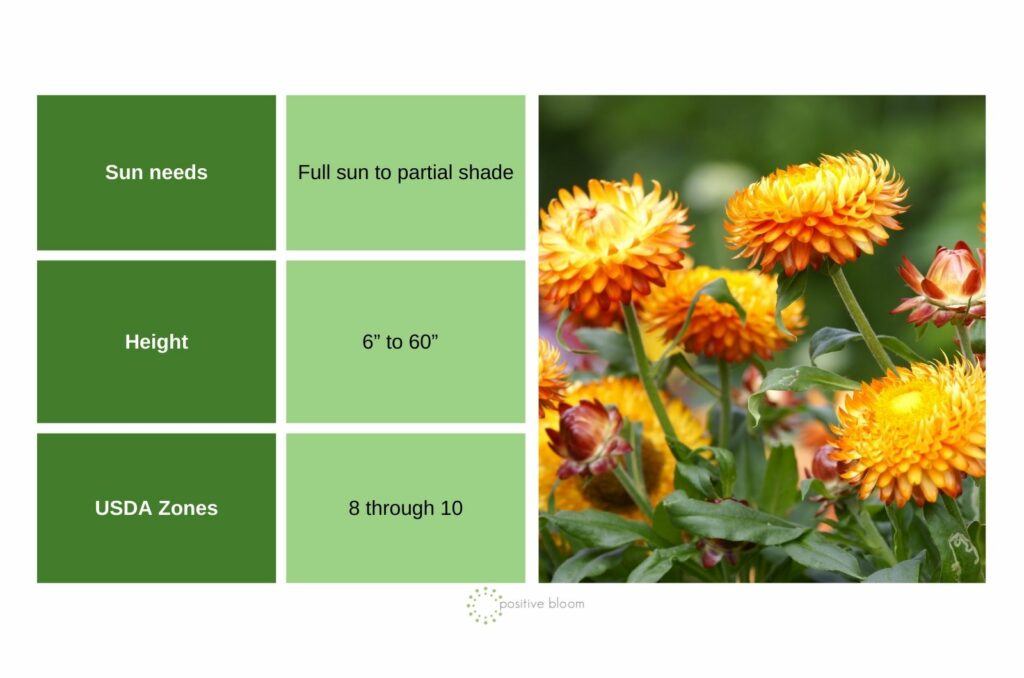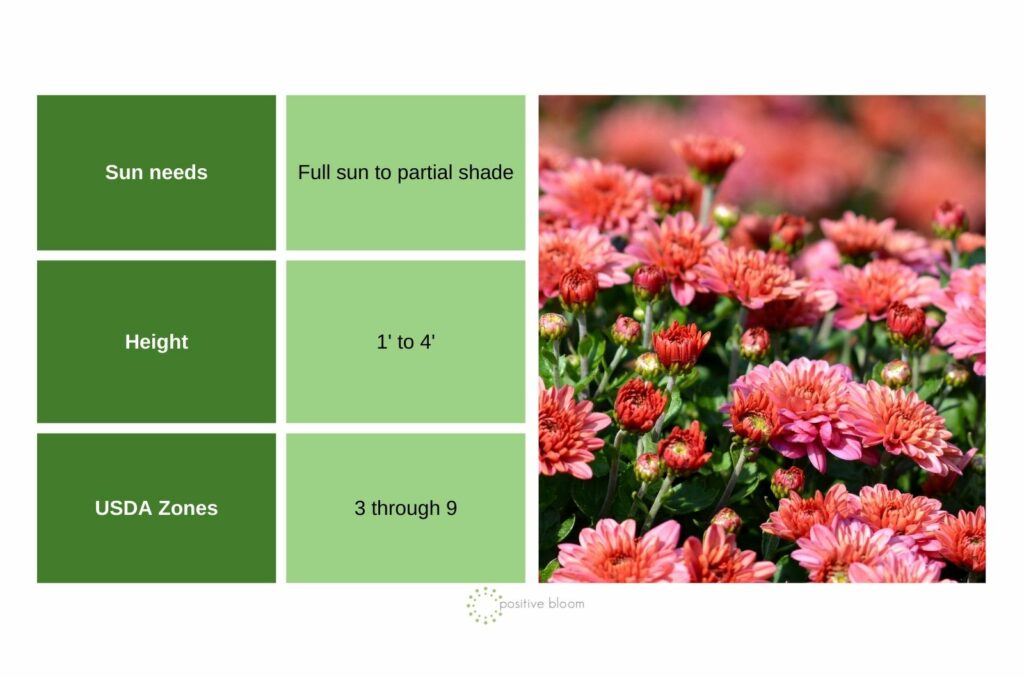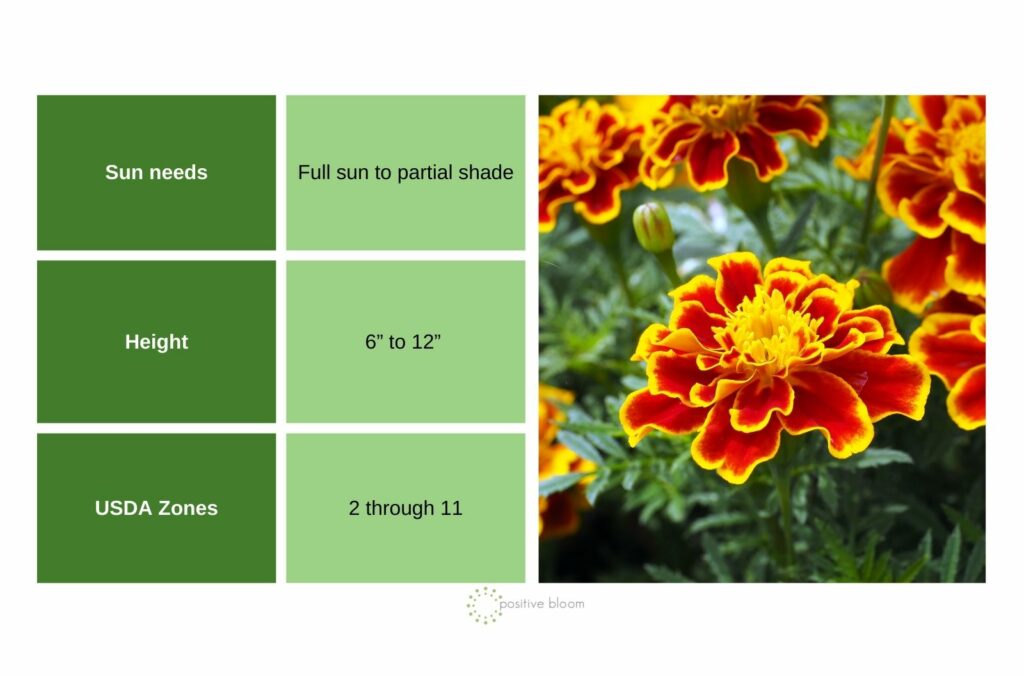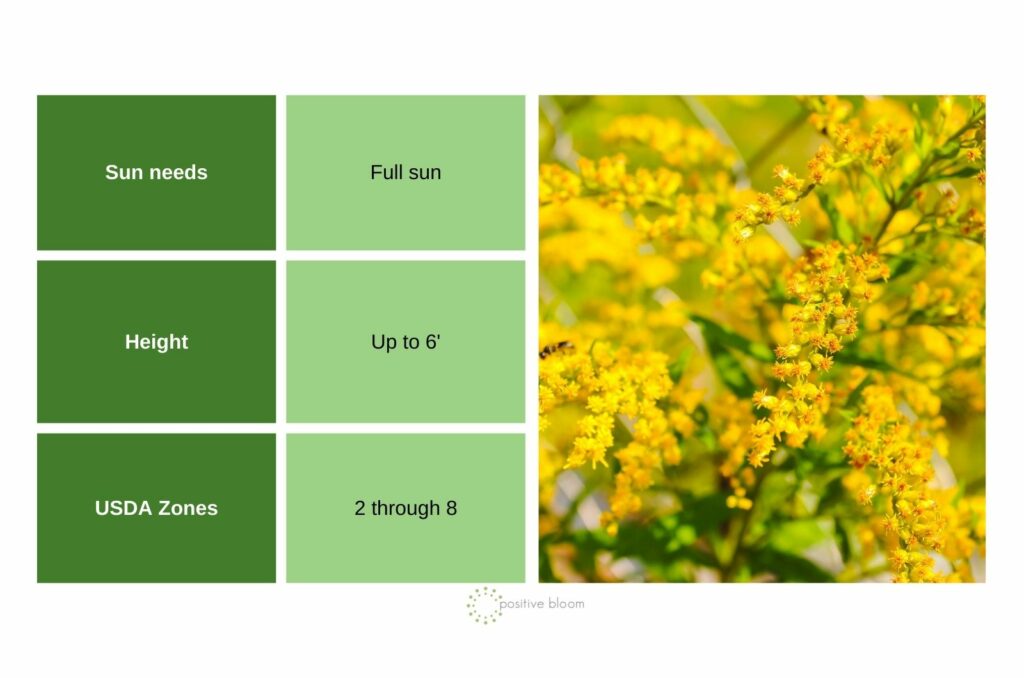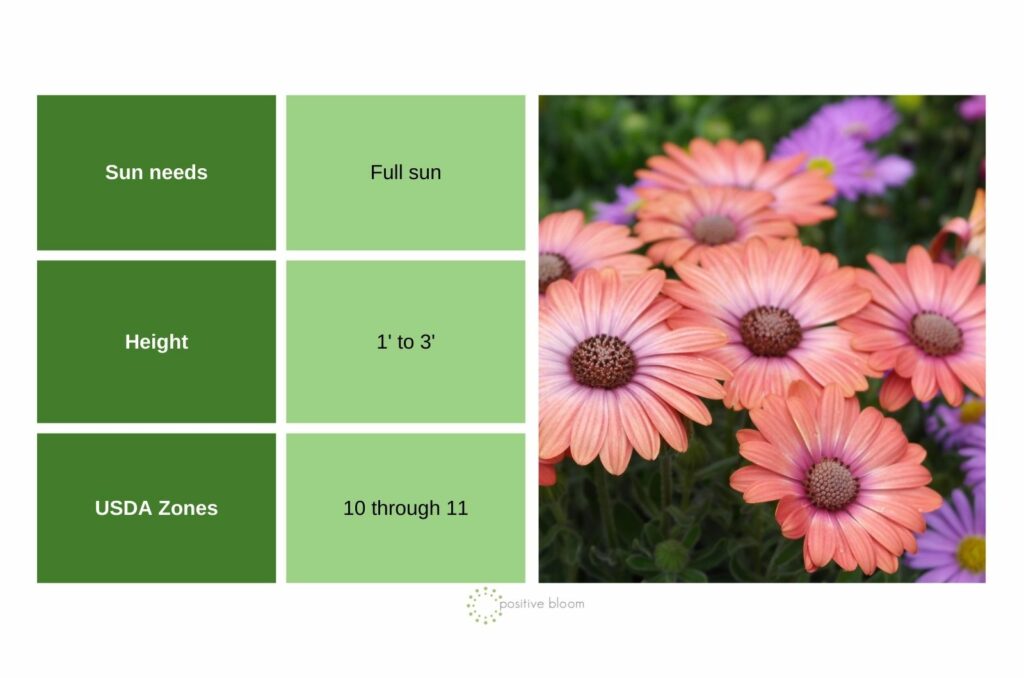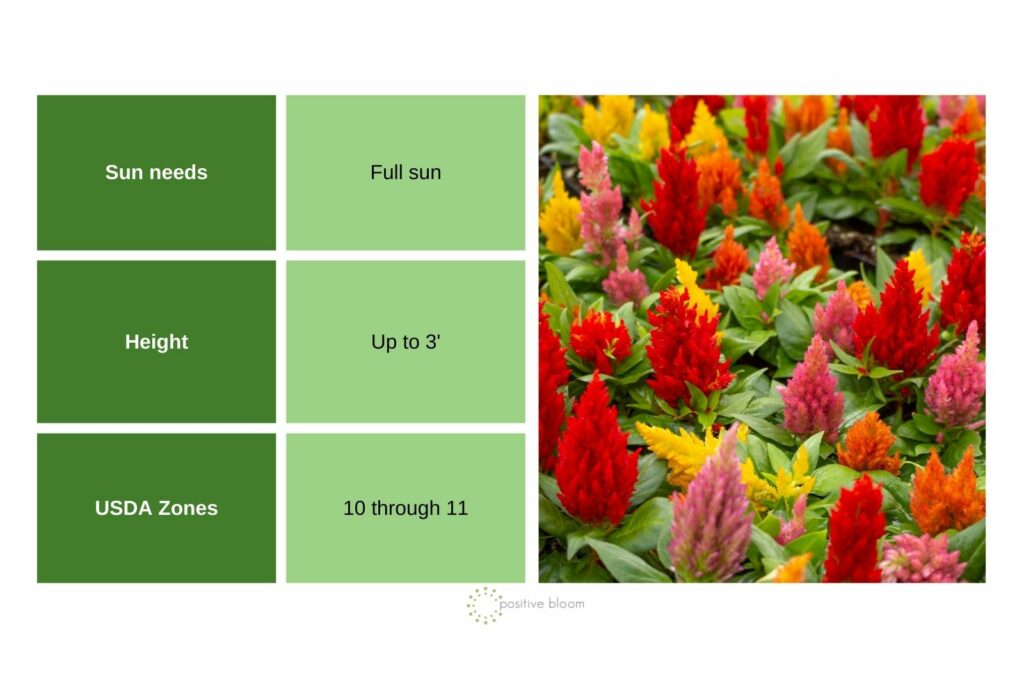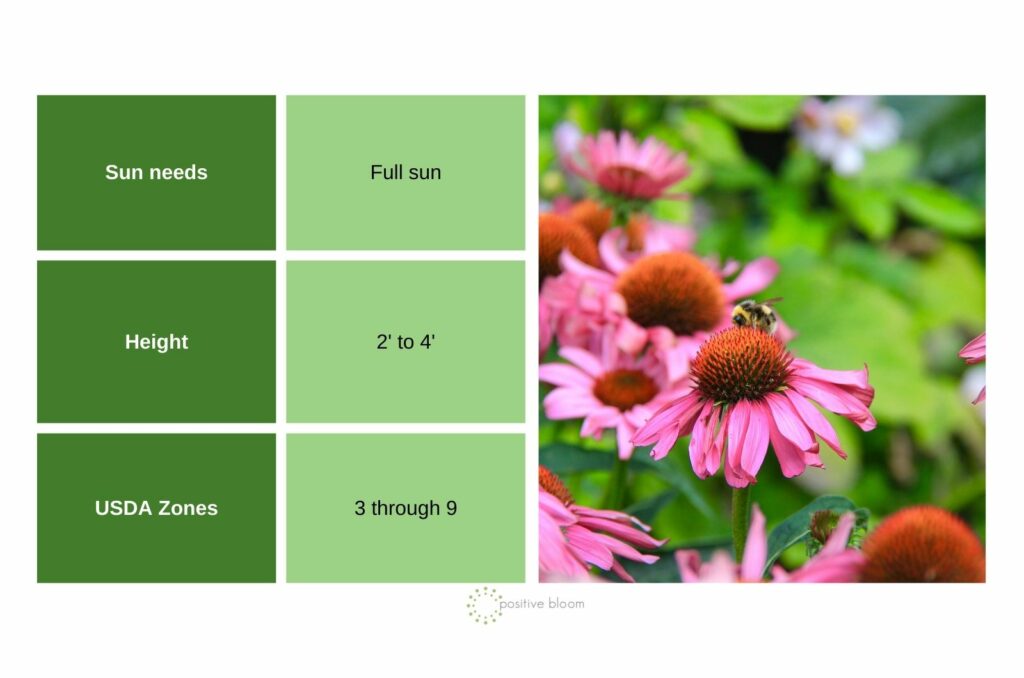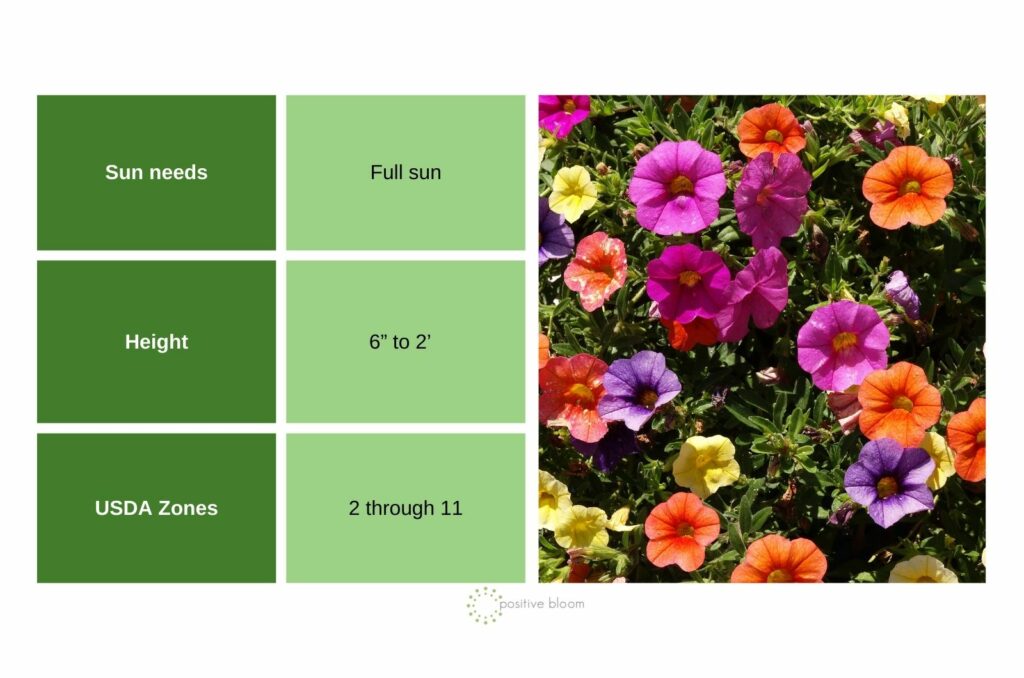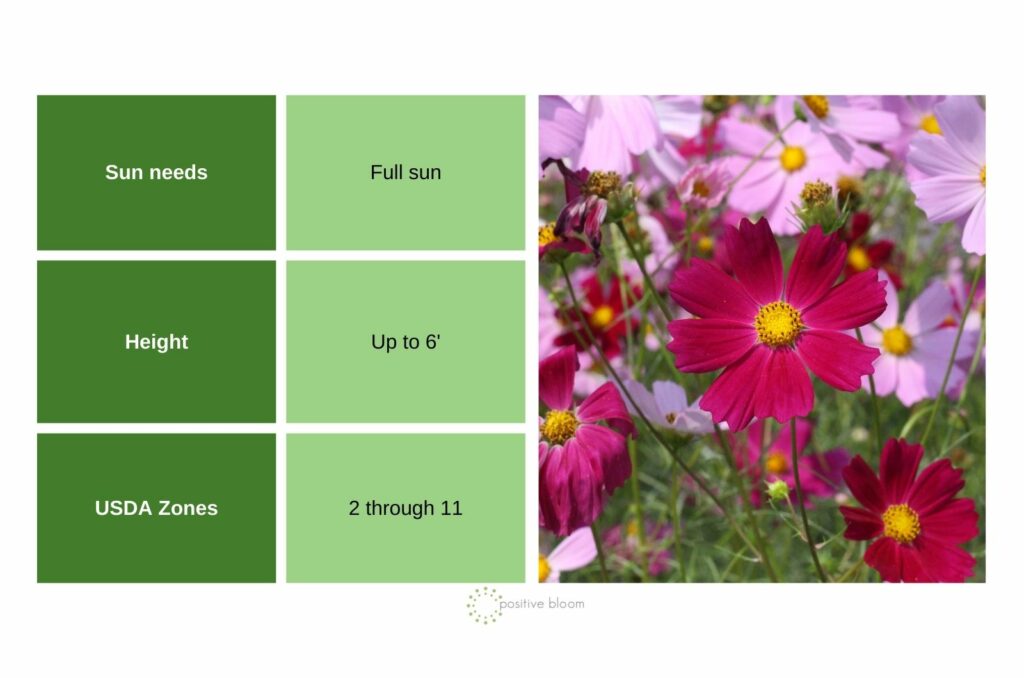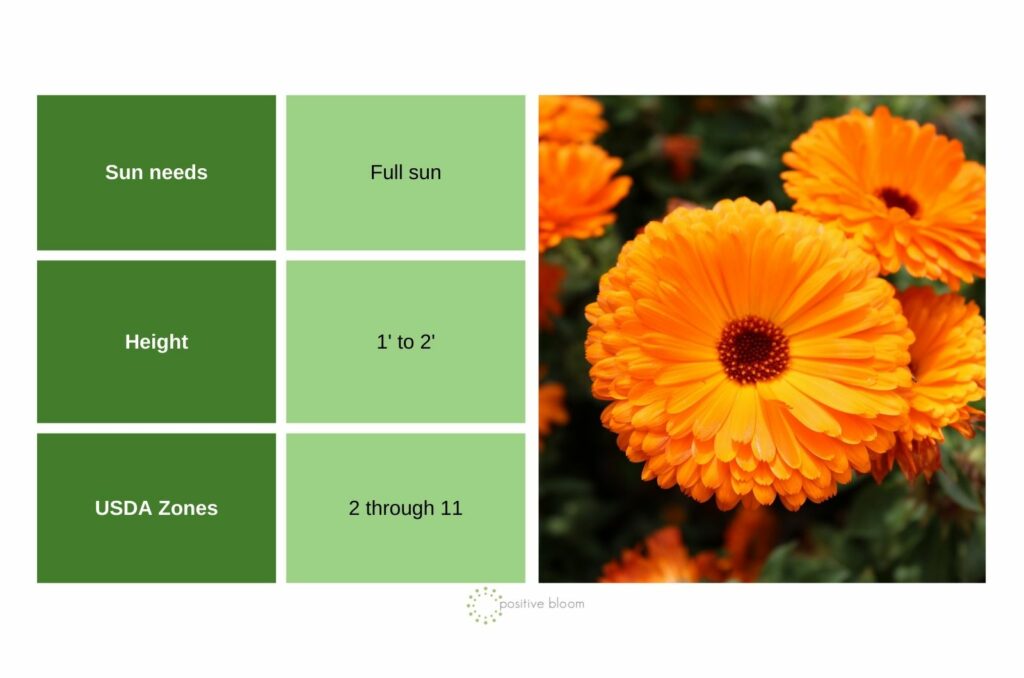Thinking about spicing up your garden with some fall blooms? August is the perfect time to start planting for a colorful autumn display!
I used to think that you have to wait until fall arrives to start working on your garden, but that’s actually not the case. In fact, you can slowly start prepping during the summer so you have a garden full of blooms as the leaves are changing color.
Don’t know what to plant?
No worries, I’ve got the scoop on some fabulous flowers that will keep your garden looking lively and beautiful well into the cooler months.
You can…
1. Start Your Fall Garden With Snapdragons
If you want an awesome plant that doesn’t mind cooler fall temperatures, then you definitely want snapdragons. They have fluffy flower heads that are not just pretty, but also make fantastic cut flowers, too!
In North Florida, where I live, they stay lively all year round, though they do get a bit grumpy in the summer heat.
For cooler climates, go for smaller varieties that’ll bloom faster. If August is still kind of hot where you are, start the seeds indoors to give them a head start.
Snapdragons love full sun but appreciate a bit of afternoon shade in hotter regions. Provide them with good growing conditions and they’ll adorn your fall garden with vibrant blooms.
Related: 25 Best Flowers For Early Spring And A Gorgeous Display
2. Add Tickseed To The Mix
Tickseed (also known as Coreopsis) is literally sunshine in a flower!
These cheerful blooms come in pretty warm colors that pollinators can’t resist (and neither can I). They’re yellow perennials that grow in USDA zones 4-9, meaning they’ll keep bringing joy to your garden year after year.
Even though they might need a trim after a frost, they’ll bounce back in early spring, ready to produce lots of colorful flowers!
Growing them from seeds is easy, though they might not flower in their first year. If you want them to grow super quickly, try nursery starts. They reseed nicely if you leave the flowers on, but for a tidier look and more blooms, deadhead those spent flowers.
Just be ready for some high-maintenance as these beauties grow in big, lively clumps!
3. Make The Perfect Trio WIth Salvias
If you’ve decided to add snapdragons and tickseeds (and you still have some garden space to fill), then you should definitely consider adding salvias as well!
These lovely plants produce colorful flowers with delicious nectar that attract pollinators through most of the year. If salvia isn’t already gracing your garden, now’s the perfect time to plant some in August.
Start by keeping the soil moist to help it get rooted. Once it’s settled in, salvia is as tough as nails, thriving even in dry conditions. It can spread quickly by rhizomes, so it’s great for containers if you’re looking to keep it under control.
Salvia is also pretty laid-back about soil and doesn’t need much attention. While it loves full sun, it can handle partial shade in hotter areas.
It’s also not a fan of heavy fertilizing; it’s quite efficient with its nutrients. For the best results, go for slightly acidic soil (though it can adapt to basically any type of soil).
Related: Problems With Salvias And How To Solve Them
4. Bring Fall Vibrancy With Rudbeckias
Rudbeckias (you might also know them as Black-eyed Susans) are the perfect flowers for fall gardens.
They’re so easy to grow that you’ll often find them casually growing along roadsides. These blooms love the heat and can handle drought like true champions.
Soil? They’re not picky at all, and while they don’t need fertilizer, they won’t mind a little nutrient boost.
If you decide to grow them, start your seeds in early spring (expect those blooms from late spring to early summer). If growing plants from seeds isn’t your thing, then go for nursery strats as alternatives.
Related: The Downside Of Black-Eyed Susan Vines That No One Will Tell You About
5. Add Zinnias To Make Everything More Cheerful
If there’s one flower that’s guaranteed to put a smile on your face, it’s the zinnia!
Zinnias are my go-to flowers when I want a quick garden makeover. I plant these seeds year-round, and I’m always amazed by how fast they grow into cheerful blooms.
If you plan to grow them, I would recommend popping the seeds into the ground in August so, by September, you’ll be able to enjoy colorful flowers that’ll last until frost.
What’s great about zinnias is that they are easy to grow – just sprinkle a couple of seeds a foot apart, and thin them out to the strongest ones when they’re about two inches tall.
Water them before thinning to keep their roots happy, and you can move any extras to other spots in your garden for some additional cheer!
Related: This Is The Easiest Way To Tell If Your Zinnias Are Ready For Cutting
6. Plant Strawflowers For A Garden Filled With Joy
If you love flowers that look great even after drying, strawflowers are a fantastic choice. In warm climates, they’re grown as short-lived perennials, while in cooler areas, they behave as annuals.
Starting them from seed isn’t as tricky, and they usually sprout well, but they like to take their sweet time to bloom. For autumn flowers, it’s best to begin with a nursery that starts in August.
Strawflowers are visually striking, with their papery, colorful bracts that keep their vibrant hues even when dry. They thrive in full sun and are pretty easy going about soil, though they do need regular watering to avoid wilting. In hotter climates, a bit of afternoon shade can help them stay happy.
7. Don’t Skip Out On Chrysanthemums
Want more stars? Chrysanthemums, or mums, are another star of fall!
From August to September, these delightful blooms are everywhere, making every corner of your garden special.
No matter if you prefer the compact, bushy varieties or the taller ones that are perfect for cutting, there’s a mum for every garden.
These perennials are ideal for sprucing up your front porch, but get them in the ground before winter hits.
To keep your mums in tip-top shape, don’t overwater them. They’re prone to powdery mildew, so let’s keep that foliage dry and give them some breathing room by avoiding overcrowding.
This might be interesting: Can You Really Grow Already-Dead Mums In Your Garden?
8. Brighten Up Your Fall Garden With Bold French Marigolds
French up your garden by growing French marigolds!
Marigolds’ charming blooms are absolutely perfect for fall. These petite beauties grow quickly, usually taking just about two months from seed to bloom (this is another flower I grow when I want my garden to be full of color in no time).
Plant them in August, and you’ll enjoy their cheerful display well into fall season (as long as temperatures stay above 40°F though) .
I’ve noticed numerous benefits from marigolds. They are not only pretty but practical, too (they help keep nasty insects away from my fall veggies with their strong scent).
They self-seed, but for the best results, I would suggest saving their dried seed heads to plant in spring.
Related: Here’s Why Marigolds And Cucumbers Are The IT Couple This Summer
9. Add Goldenrod For A Radiant Fall Glow
What I like about Goldenrods is that they just keep giving – once in your garden, you won’t need to buy more.
It self-seeds generously, though it can sometimes be a bit too enthusiastic. Plant it in a spacious spot where it can spread out and thrive.
While some goldenrod varieties can be invasive, native types are well-behaved. I personally give mine a little shake to scatter the seeds, though they don’t multiply as quickly as I’d like in my warm climate.
Nursery starts are usually available in late summer, so you can get a head start.
Give goldenrod full sun and watch it grow into a tall, leafy backdrop that pairs beautifully with other flowers. Just keep in mind that you’ll have to water your goldenrod regularly!
10. African Daisies Shouldn’t Be Missed This Fall
African daisies are the real treasures of fall gardens! In warm USDA zones 10-11, these lovely perennials will come back in the spring (but they’re also great annuals in cooler areas.)
They start blooming in the spring, take a little break during the summer heat, and then make a great comeback with colorful flowers as soon as the fall arrives.
Plant them towards the end of summer to give them a head start before temperatures drop. Keep the soil moist while they get established. And once they’re settled, they’re pretty drought-tolerant.
Feed them monthly with a high-phosphorus fertilizer to keep the blooms coming right up to the first frost.
For an extra round of flowers, pinch them to encourage branching and remember to deadhead the spent blooms.
11. Make Your Garden More Lively With Celosias
Lovely celosias are one of my go-tos for fall gardens. Wonder why?
Well, it is because their feather-like flower formations got the most compliments last season (these beauties are definitely showstoppers!).
If you plan on growing them this fall, you can either start them from seeds or opt for nursery plants.
Either way, make sure your celosias are nice and moist – well-draining soil is a must.
You can combine them with these 9 plants that make perfect companions to celosia.
12. Coneflowers Are A Must-Have As Well
Want tough yet beautiful blooms thriving right up to the first frost in zones 3-9? Pick coneflowers!
These perennials are not only reliable year after year but also offer a feast for pollinators.
If you decide to grow them, I would suggest you leave the seed heads on through winter to attract delightful birds (they will turn your garden into a winter wonderland!)
Coneflowers aren’t aggressive but will self-seed; so, if you are going for that natural, wildflower look, they are great candidates.
Plant them in clusters for maximum impact. Regular deadheading encourages more blooms, and leaving the foliage through winter is a treat for the birds.
Once the spring comes, you should cut the old foliage back to make way for fresh growth.
Related: This Is How You Should Harvest Your Coneflowers For A Spectacular Bloom Display Next Year
13. Petunias Are The Perfect Autumn Flowers
If you are not in a hurry but want your fall garden to look nice, opt for petunias – they are always showing up in style, though they do take their time to get ready from seeds.
In cooler climates, petunias might be a bit too delicate to last past Thanksgiving. But, in warmer spots, they’ll be thriving for a good while. You can also grow them in hanging baskets or containers (petunias mix beautifully with other fall flowers).
I’m especially smitten with the ‘Black Cat’ variety because it has the deepest, velvety purple you can imagine (what can I say, I love my dramatic flowers).
In case you missed the spring planting window, don’t worry; your local nursery will have plenty of these beauties waiting for fall. Remember to water them well and deadhead regularly to keep those blooms coming!
Related: If You Grow Petunias, Avoid These 4 Gardening Mistakes At All Costs
14. There’s No Party Without Cosmos
If you are planning to have the most colorful autumn garden ever, you’ll definitely have to add cosmos to your list.
These precious little flowers, with their fern-like leaves and dainty blooms, are fast-growing and always ready to party. You’ll have a garden buzzing with bees by October, as these flowers are their favorite snack (they sure look delish).
You might have heard stories about the soil, but no worries – cosmos are pretty laid back. They’re not too picky as long as the drainage is good, and they’re totally cool with a bit of neglect (unlike orchids).
Just don’t overdo it with the fertilizer, or they might get a bit too leggy and topple over. Cosmos handle drought like true champs and are quite tolerant of heat (but when frost hits, they’ll gracefully bow out).
This might be helpful: 9 Shocking Reasons Your Cosmos Aren’t Blooming And The Simple Fixes You Need To Know
15. Finish Your Fall Garden With Calendula
Calendula is one of my favorite quick-bloomers, and it’s a real treat to grow. Although they aren’t big fans of the summer heat and prefer a bit of shade, these delightful flowers absolutely thrive in the cooler months.
Plant them in August, and you’ll be rewarded with bright blooms in as little as 30 days!
Directly sow the seeds in your garden and keep the soil moist during germination. Once established, they’re surprisingly drought-tolerant. Rich soil will boost their growth which eventually leads to even more blooms!
With their daisy-like flowers in orange, yellow, red, white, and pink, calendulas are truly the best kind for fall gardens.They can handle a light frost and might even bloom through winter in warmer climates.
If you are not a fan of calendula, I hope you liked some of these fifteen flowers. Combine one or two, and you’ll definitely have the best and most colorful-looking garden in the whole neighborhood (trust me, everyone will be jealous).

